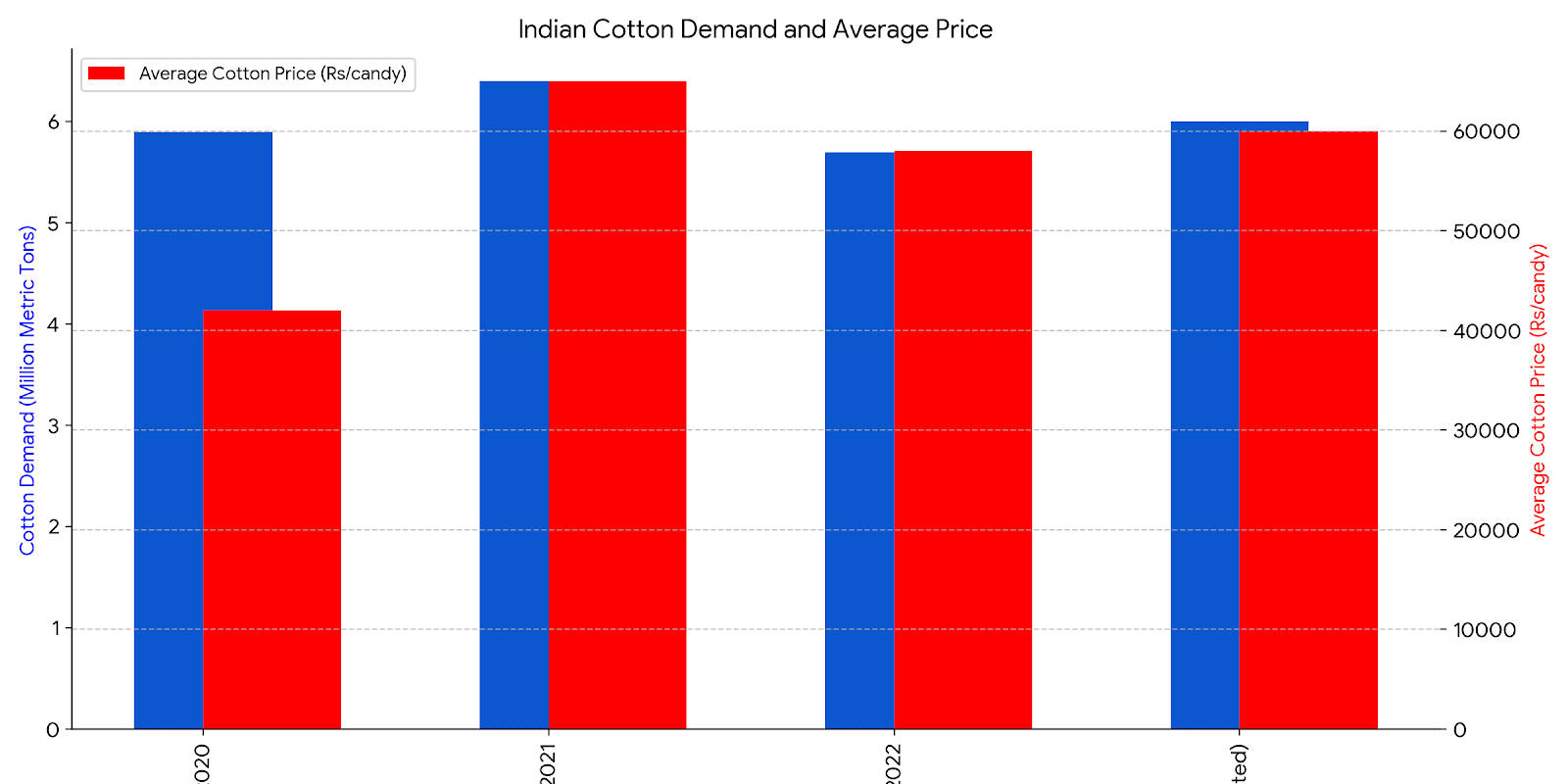Global Cotton Demand in a Downward Spiral: A two-year overview and India's resilience

The global cotton market has been experiencing a significant downturn for over two years, with demand plummeting and prices following suit. This prolonged slump has had far-reaching implications for the industry, impacting producers, traders, and consumers alike. While India's cotton sector has also navigated similar waters, its path differs in several key respects.
What caused the global slump
There are numerous reasons for the decline in global cotton demand.
Economic slowdown: The global economy has faced significant challenges, including rising inflation, supply chain disruptions, and geopolitical tensions. These factors have dampened consumer spending and reduced demand for textiles and apparel, impacting cotton consumption.
Shift in consumer preferences: The rise of synthetic fibers and alternative materials has provided consumers with more choices, impacting the demand for cotton.
Excess supply: High cotton production in previous years has led to a surplus, further depressing prices. The disruptions in global supply chains due to the pandemic and other factors have added to the uncertainty in the cotton market, affecting production and trade flows.
India a different story
While the global cotton industry faces challenges, India has demonstrated resilience in the face of this downturn. India's domestic demand for cotton has remained relatively stable, supported by a growing population and increasing disposable incomes. Moreover, India has also benefited from a robust export market, with significant shipments to countries like Bangladesh, Vietnam, and China. And due to steady demand and exports, cotton prices in India have been relatively stable compared to the global market. However, they have not been immune to the downward trend, with some fluctuations observed.
Table: Indian cotton demand
|
Year |
India's cotton demand (mn metric tons) |
Change (%) |
Average cotton price (Rs/candy) |
Change (%) |
|
2020 |
5.9 |
- |
42,000 |
- |
|
2021 |
6.4 |
+8.5 |
65,000 |
+54.8 |
|
2022 |
5.7 |
-10.9 |
58,000 |
-10.8 |
|
2023 (Projected) |
6 |
+5.3 |
60,000 |
+3.4 |
Table: Data comparison, global vs. India
|
Indicator |
Global |
India |
|
|
Demand Trend (2022-2024) |
Significant decline |
Relatively stable |
|
|
Price Trend (2022-2024) |
Significant decline |
Relatively stable with some fluctuations |
|
|
Major Factors |
Economic uncertainty, shifting consumer preferences |
Steady domestic demand, strong exports |
What worked for India is its domestic market strength. India boasts of a robust domestic textile industry, which has helped cushion the impact of global demand fluctuations. The Indian government's various support measures, such as MSP and export incentives, have played a crucial role in stabilizing the cotton sector. Also, in some years, favorable weather conditions have contributed to better crop yields, offsetting some of the demand-side pressures.
Overall the global cotton market's downturn underscores the interconnectedness of the global economy and the complex interplay of factors influencing commodity markets. While the future remains uncertain, the resilience shown by India, offers a glimmer of hope. The industry's ability to adapt to changing consumer preferences and embrace sustainable practices will be key to navigating these challenging times.
